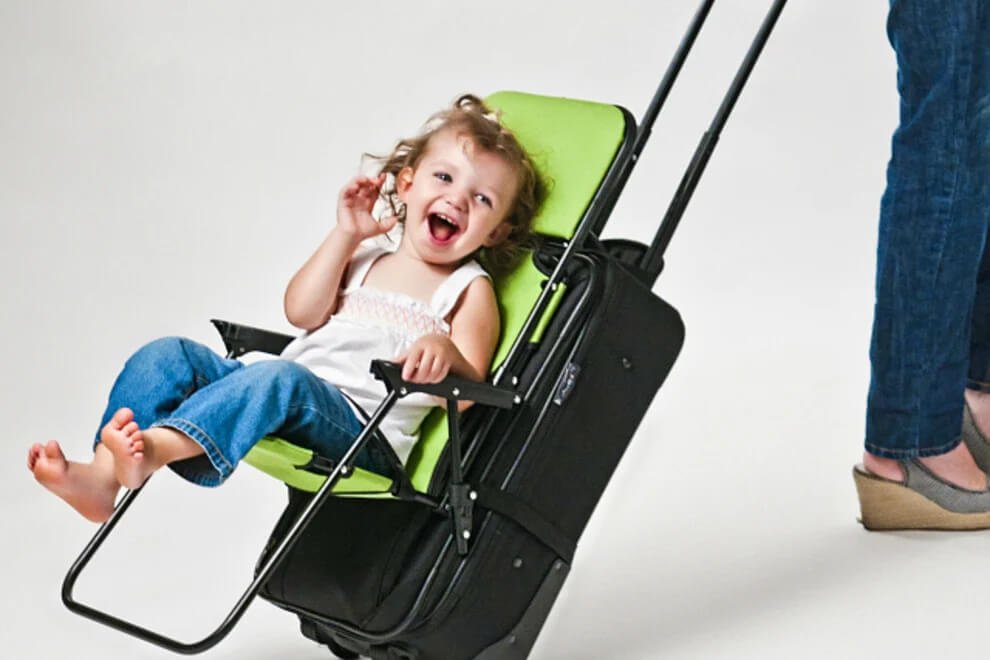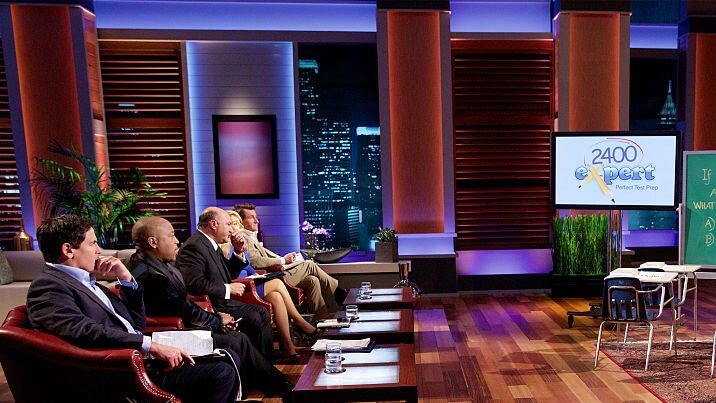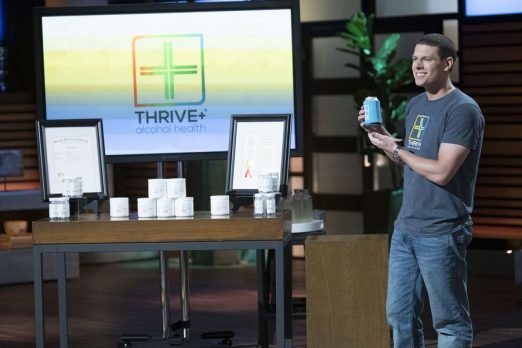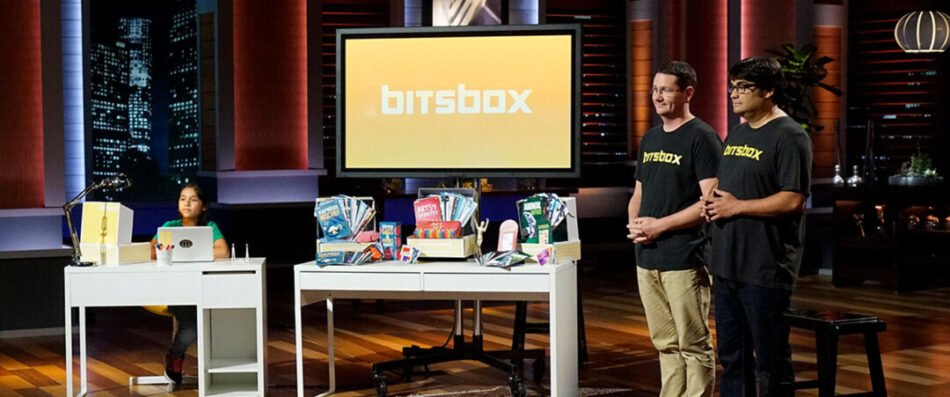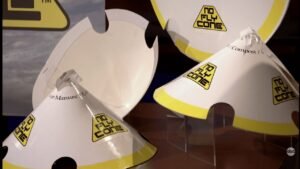Let’s bust the get a deal on Shark Tank, become a millionaire overnight myth right here. That’s not how it plays out for most founders, and honestly, even some winners watch their hype fizzle fast. The story behind Ride-On Carry-On? It’s got a little of everything: grit, hustle, a real product solving a real pain point, venture drama, solid numbers…then, a twist you don’t see coming. Here’s how it really went down—and what we all can learn from it.
Contents
ToggleOpening the Doors: What Is Ride-On Carry-On?
Here’s the product in plain English: Ride-On Carry-On isn’t a suitcase or a stroller—it’s the hack that turns your rolling carry-on bag into a travel seat for your kid. Strapped to luggage, it solves the every-parent airport meltdown—no need to haul around a bulky stroller (or, worse, chase a tired toddler through TSA lines).
Founded by Darryl and Randy Lenz—partners in marriage and in hustle—Ride-On Carry-On aimed at families tired of bad airport experiences. No fluff here: this was smart, practical, and had every traveling parent nodding in desperate agreement.
Founders’ Backstory: Who Bet on This Idea?
Darryl Lenz logged twenty-seven years as a flight attendant. Think about that—almost three decades watching the agony of parents wrangling kids across airports. You don’t get market research better than real-world pain.
The aha moment? Darryl literally had to rig something for her own son one day. This wasn’t a Silicon Valley we pivoted after a design sprint project. This was necessity, sweat, and enough airport horror stories to fill a Netflix series.
Randy backed the vision, handling prototypes and the logistics. They weren’t college kids in a garage—they were parents dealing with the problems their target customers faced every single trip.
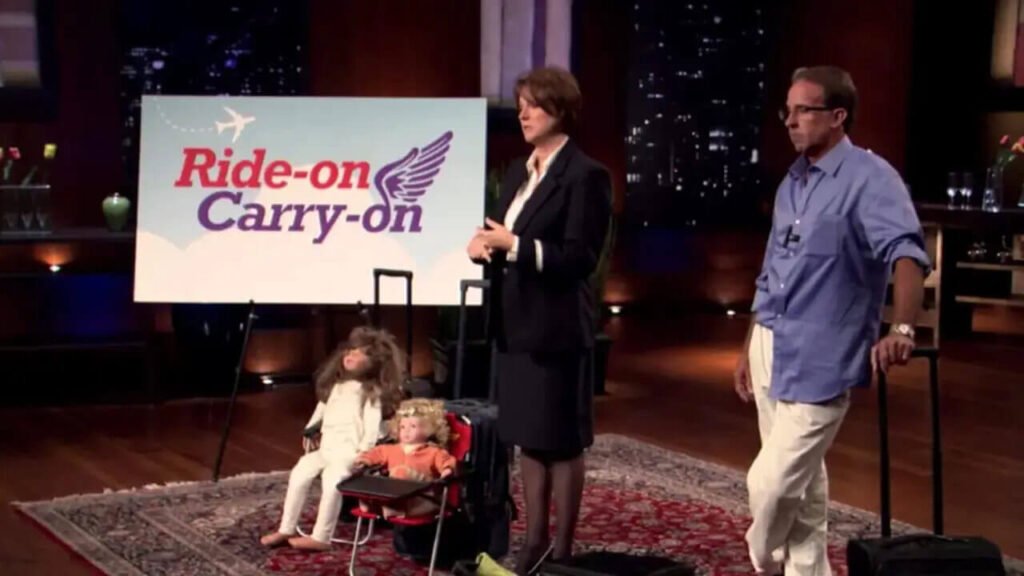
Pitch Highlights: What Went Down in the Tank?
It’s Shark Tank, Season 2, Episode 4. Here’s the set-up: the Lenz duo stride in, asking for $50,000 for 25% equity. They don’t fumble with jargon—they bring a doll, strap it into the Ride-On Carry-On, and show the fix instantly. Every parent watching gets the problem in two seconds flat.
The Sharks perked up. Mark Cuban, Robert Herjavec, Kevin O’Leary, Daymond John, Barbara Corcoran—everyone saw the market. But you know Shark Tank: they push, they probe, and they try to spot cracks. Randy and Darryl ate the fire calmly, owning their numbers and talking up the demand from day-one sales.
Barbara and Kevin started circling. And right here is where founders usually blow it—getting greedy or waffling. Not these two. They kept it straight, answered every question with confidence, and didn’t let emotions hijack their pitch.
Deal or No Deal: Did They Walk Out With Cash?
Here’s what Shark Tank fans always want to know: did they get that shot of cash? Yes, and they played it textbook. Barbara Corcoran stepped up—quick, decisive, old-school real estate grit. She matched their ask: $50,000 for 25% equity. No sneaky contingencies, no proprietary tech nonsense.
If you’ve watched enough Shark Tank deals crash after TV, you know the handshake isn’t always the payday. But this wasn’t a smoky backroom deal. Barbara saw what most seasoned investors see: a simple answer to a universal pain, a founder with domain expertise, and enough hunger to keep pushing. I’ve seen too many founders try to squeeze every last dime. The Lenzes didn’t overplay their hand. That’s a pro move.
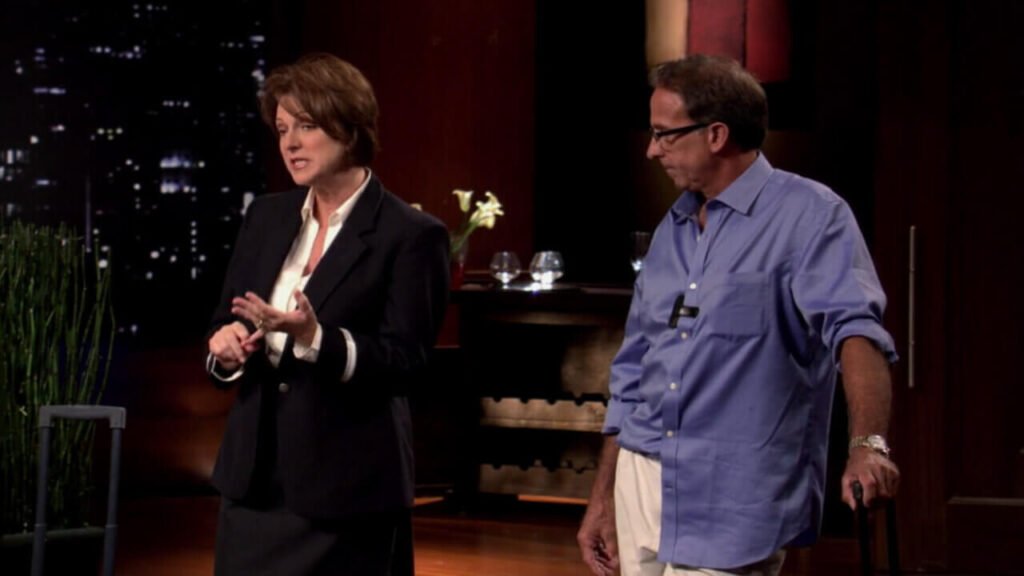
Net Worth and Numbers: How Big Did This Business Get?
Let’s talk real growth—the Shark Tank bounce is famous, but so is the post-show crash for many. Ride-On Carry-On snagged a feature in a Shark Tank update episode: that’s how you know they were hitting their numbers.
After the show, they moved serious volume. There’s footage of a full shipping container rolling out—straight up, that’s every solo founder’s dream. By 2021, Ride-On Carry-On was pulling in about $1 million a year. That’s verified, not Shark Tank projections. For a single-SKU product in a tough category? Solid.
Barbara Corcoran reportedly recouped her investment and then some. Sources put her return in the most successful deals bucket—rare air, even for someone with her track record. She saw real money, not just a TV credit.
Was this a Bombas or Scrub Daddy level rocket? No. But seven figures in retail is real. The Lenzes didn’t risk it all on crazy margins—they built a business with a strong brand, a recognizable story, and clear utility.
Growth Spurts: What Changed After Shark Tank?
The TV glow can fade quick—but the Lenzes hustled. The team expanded their distribution, selling through big online retailers and moving internationally. Their website picked up steam. Retailers jumped on board—momentum was real.
By 2019, the brand had shifted under a new distributor, Think King, looking for more product range and better logistics. That’s the kind of scaling move too many early founders resist—they wanted wider reach, and they got it.
They didn’t rest on one SKU, either. They launched stroller hooks, travel totes, more accessories—always playing in that make parent travel suck less lane. That’s how you get repeat customers and win at retail.
But not every chapter is a win. By late 2022, the original stroller seat was off the market. Think King hit pause. The website and socials went silent. No big media fanfare—just the quiet fade you see with a lot of niche CPG brands when logistics or margins shift.
Current Status: Is Ride-On Carry-On Still Rolling?
Here’s the tough truth: as of May 2024, Ride-On Carry-On’s status is unclear. The official website is gone. The product isn’t listed with big third-party sellers. Think King, their last distributor, no longer shows the stroller seat in stock.
You won’t find slick Instagram posts or fresh press releases. If you’re hunting for the chair today, you’re probably digging through used listings or secondhand shops. The business appears to have wound down quietly—no drama, no tabloid bankruptcy.
Who owns the IP now? Hard to say. It likely sits dormant under Think King or the original LLC. The founders haven’t made a big public statement, which usually points to a quiet exit, not a courtroom show.
Can you still buy it? Not directly—unless you land a secondhand find, it’s not out there.
Lessons and Legacy: What Can Founders Learn Here?
Every founder watches Shark Tank for hacks and blueprints, but here’s what matters: Ride-On Carry-On was built from real pain, for a real audience. This wasn’t an app no one needed. This was an obvious win—proof that you don’t need sexy tech to build a seven-figure company.
The Lenzes showed up ready. They priced their ask right, stuck to their guns, and took the deal when it was smart—not when it was flashy. There’s a lesson there: always know your walk-away number.
Scaling is hard—even when you win big on TV. The rebrand, the product expansion, the switching of hands—all of it is textbook CPG struggle. Sometimes you run the course, max out your niche, and call it a day with money in the bank.
And that’s fine. Not every exit is an IPO. Sometimes walking away in the black, with your sanity and reputation, is the real win. Barbara Corcoran knows that. The best founders do, too.
Final Word: The Real Impact
Did Ride-On Carry-On flip the travel industry upside down? No. But it made airports less miserable for thousands of families, and it showed TV founders that deep expertise—actually living your customer’s pain—wins over flashy slides any day.
For Shark Tank history, it’s a rare case. The product worked, the deal worked, and everyone walked away winners—before the inevitable market churn and product cycle caught up. Most importantly, the Lenzes didn’t try to hang on too long. That’s smart business.
There’s room for the next Ride-On Carry-On—a product born out of pure necessity with founder hustle behind it. But don’t get it twisted: getting a deal is just the first step. The grind never ends. Markets shift. Customers evolve. That’s the game.
If you want straight talk on Shark Tank journeys, stories like this matter more than the mega-hits. As we track brands here at SharkWorth, remember: every product, every founder, every deal has its own clock. Sometimes, leaving at the right moment is the move.
FAQs
1. Is Ride-On Carry-On still in business?
No, the Ride-On Carry-On website is gone, and new products aren’t available as of 2024.
2. Who owns Ride-On Carry-On right now?
Most signs point to ownership by Think King or the original LLC, but there’s no public statement.
3. Where can I buy a Ride-On Carry-On or its accessories?
You might find used versions on eBay or local used goods marketplaces. No retail or official site sales today.
4. Did Barbara Corcoran make her money back?
Yes. She recouped her investment and then some, ranking this as one of her strongest Shark Tank returns.
5. How much revenue did Ride-On Carry-On actually do post Shark Tank?
By 2021, annual revenue for Ride-On Carry-On hit roughly $1 million, with strong sales after the show.
6. What happened to the founders after Shark Tank?
Darryl and Randy Lenz kept building the brand for years, but their recent public business activity is unknown.
7. How does Ride-On Carry-On compare to similar products today?
Plenty of luggage-stroller hybrids have popped up, but none with the same early Shark Tank buzz.
8. Are there used Ride-On Carry-On products floating around online?
Yes, especially on secondhand sites—but check condition and age, since they’re no longer manufactured.
See past the TV shine. Behind every overnight success is a founder grinding through years of hard choices, quiet pivots, and unglamorous wins. Ride-On Carry-On is the real story—the highs, the low-key exits, and the lessons that outlast the product hype. That’s what we track at SharkWorth. Keep hustling.

